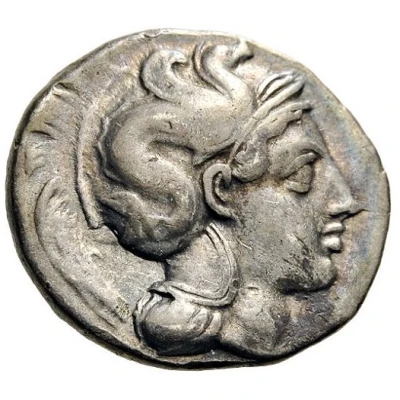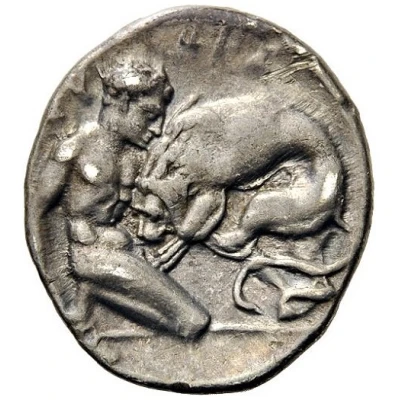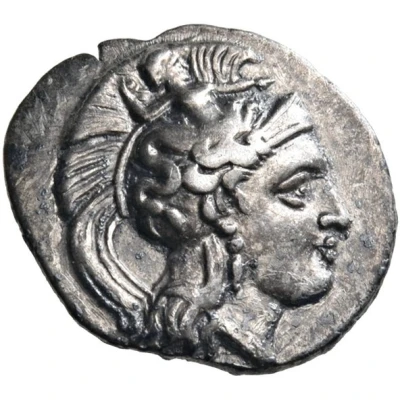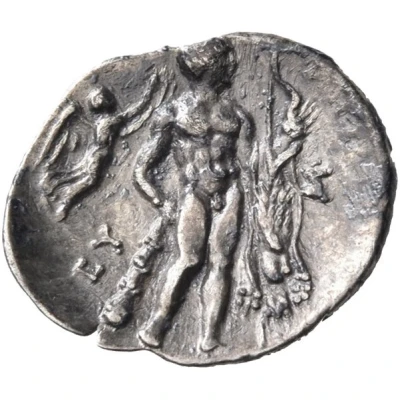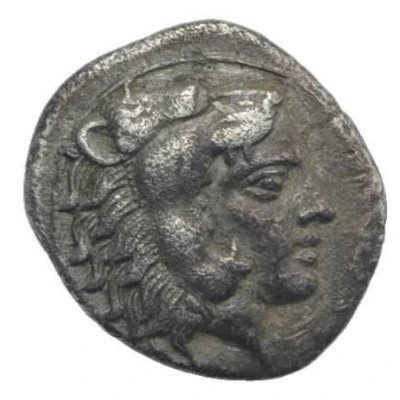
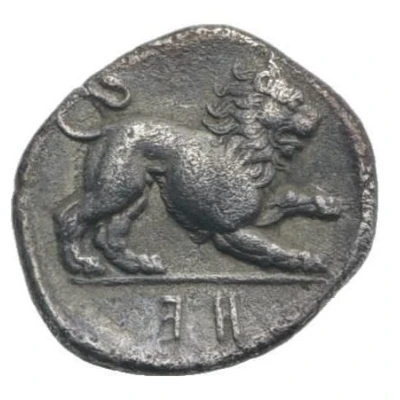

© Bertolami Fine Arts
Diobol 432 BC - 420 BC
| Silver | 1.12 g | 12 mm |
| Issuer | Herakleia (Lucania) |
|---|---|
| Type | Standard circulation coin |
| Years | 432 BC - 420 BC |
| Value | Diobol (⅓) |
| Currency | As |
| Composition | Silver |
| Weight | 1.12 g |
| Diameter | 12 mm |
| Shape | Round (irregular) |
| Technique | Hammered |
| Demonetized | Yes |
| Updated | 2024-10-10 |
| Numista | N#391871 |
|---|---|
| Rarity index | 91% |
Reverse
Lion right.
Script: Greek
Lettering: HE
Interesting fact
The Diobol coin from Herakleia (Lucania) was used as a form of currency in the 5th century BC and features an image of a mythical creature called a "diobol". The diobol is a creature with the body of a lion and the head of an eagle, and it was believed to have the power to protect the city from harm. The coin's design was meant to symbolize the city's strength and protection, and it was used in everyday transactions as a symbol of good luck and prosperity.
